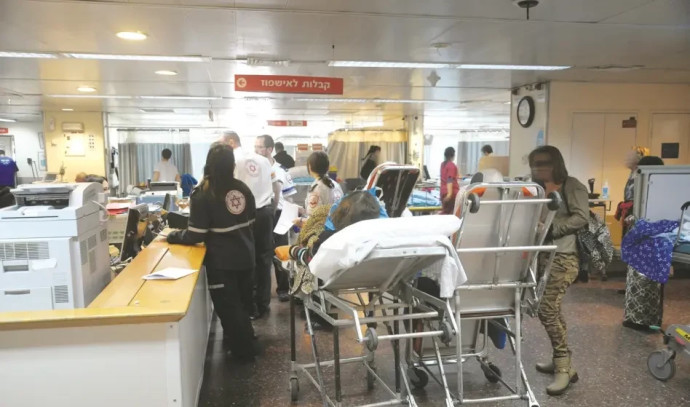This is one of the busiest winters for Israeli hospitals in recent years: Occupancy rates in some medical centers have reached over 200% in the past few weeks in the emergency rooms and internal departments. Hospitals have reported that in certain cases, waiting times have reached 15 hours or more.
The heavy loads cause a chain reaction where even Magen David Adom (MDA) teams cannot transfer patients from ambulances to hospital beds, and are sometimes forced to delay additional calls.
The high-density in internal departments causes an additional bottleneck, as teams are unable to admit critically ill patients for hospitalization.
How Israeli hospital manage the heavy loads
About six years ago, the Health Ministry introduced an advanced computerized system to manage loads in medical centers across the country. The system received reports on emergency rooms and hospital wards, allowing the Health Ministry to monitor treatment duration, bed shortages, medical staff, and overcrowding levels in medical centers.
With the outbreak of COVID, the Health Ministry has also uploaded the data to the coronavirus dashboard and made it public. However, the site was taken down shortly after its launch. Due to the heavy workload this winter, the Health Ministry decided to re-upload a similar updated site.
The interface that will soon be uploaded to the Health Ministry’s website will appear as a tab that describes the distribution of the workload in emergency rooms and possibly also in the hospital departments. At the same time, the Ministry of Health is making arrangements to deal with heavy workloads in hospitals: as part of this, instructions were given in the Ministry to lengthen shifts for nurses in exchange for additional payment.
The Health Ministry confirmed that their site is in the final stages of development, adding: “During the winter season, there has been an increase in the number of patients due to respiratory illness. The Medicine Division in the Ministry monitors the workload in hospitals and, if necessary, guides the EMS in the primary and secondary triage of patients. In addition, it was decided to add special shifts for nurses with increased compensation. The bed plan published this month also includes significant reinforcement of the internal departments.”




